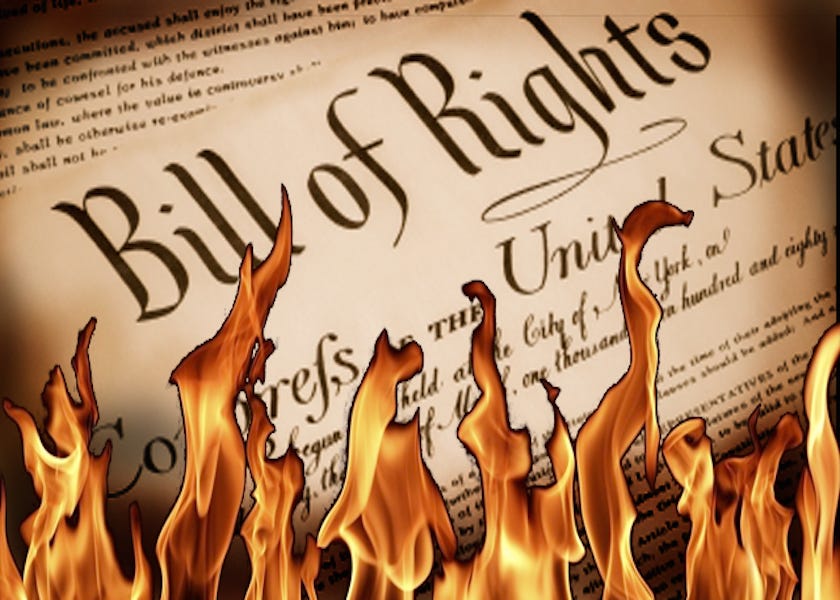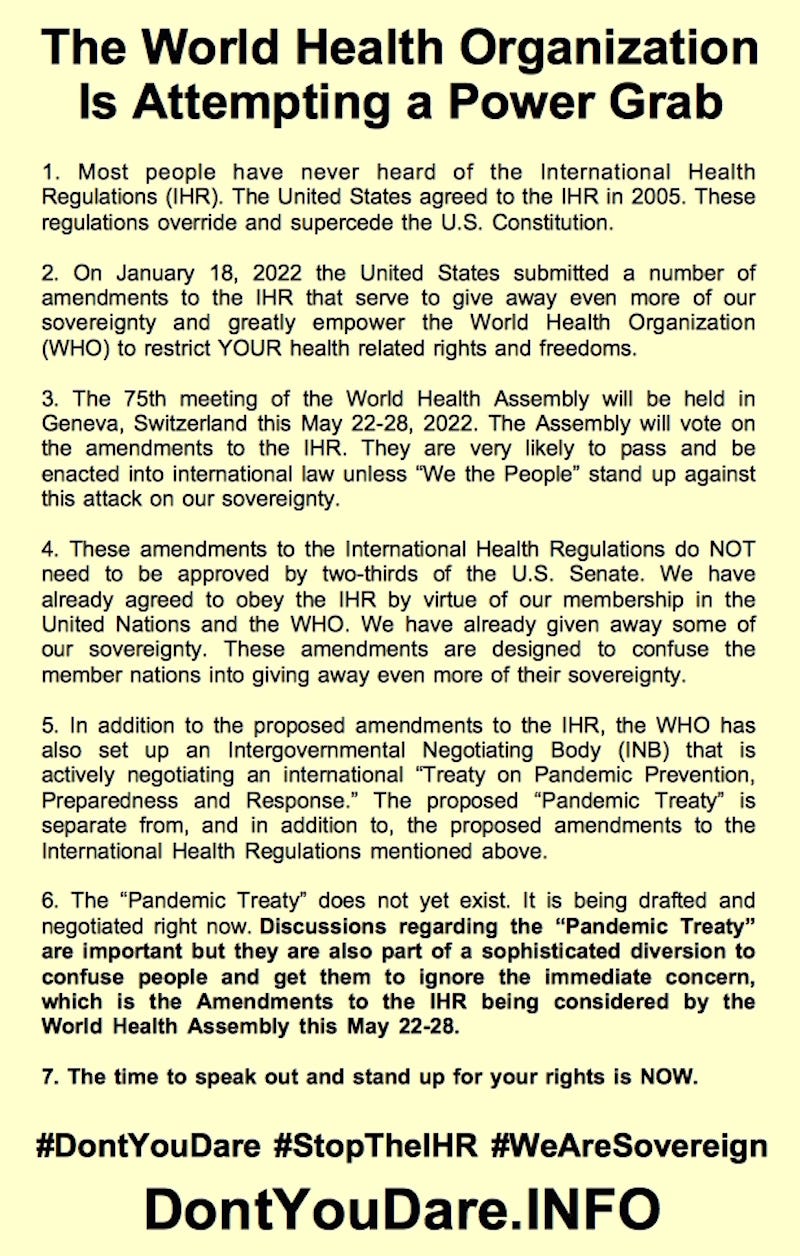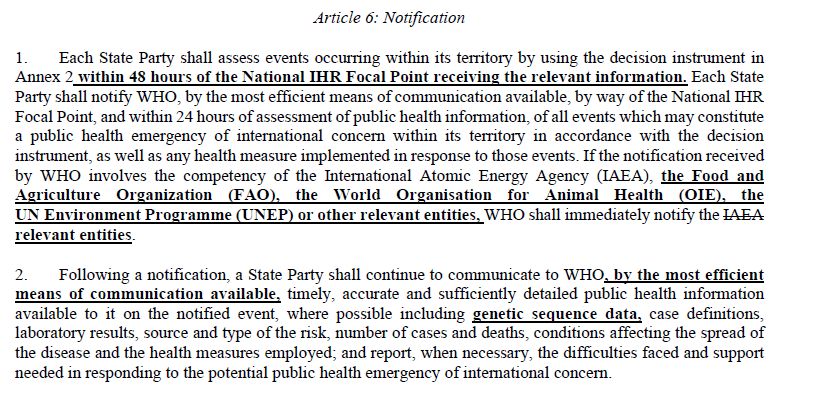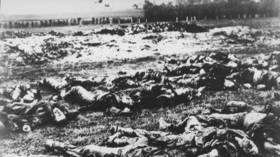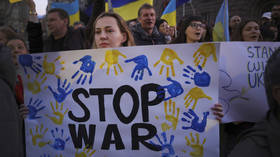AIDS (acquired immune deficiency syndrome) is the name used
to describe a number of potentially life-threatening infections and
illnesses that happen when your immune system has been severely damaged.
People with acquired immune deficiency syndrome are at an
increased risk for developing certain cancers and for infections that
usually occur only in individuals with a weak immune system.
Here we present a series of strong evidence that the Covid-19
vaccines are causing recipients to develop acquired immune deficiency
syndrome (AIDS) or a novel condition with similar attributes that can
only be described as Covid-19 Vaccine Induced Acquired Immune Deficiency
Syndrome (VAIDS).
Exhibit A
Vaccine effectiveness isn’t really a measure of a vaccine, it is a
measure of a vaccine recipients immune system performance compared to
the immune system performance of an unvaccinated person.
The first time the body encounters a germ, it can take several days
to make and use all the germ-fighting tools needed to get over the
infection. After the infection, the immune system remembers what it
learned about how to protect the body against that disease.
Vaccines allegedly help develop immunity by imitating an infection.
Once the imitation infection induced by the vaccine goes away, the body
is left with a supply of “memory” t-cells and antibodies that will
remember how to fight that disease in the future
So, when the authorities state that the effectiveness of the vaccines
weaken over time, what they really mean is that the performance of your
immune system weakens over time.
In regards to the Covid-19 injections –
- A vaccine effectiveness of +50% would mean that
the fully vaccinated are 50% more protected against Covid-19 than the
unvaccinated. In other words the fully vaccinated have an immune system
that is 50% better at tackling Covid-19.
- A vaccine
effectiveness of 0% would mean that the fully vaccinated are no more
protected against Covid-19 than the unvaccinated, meaning the vaccines
are ineffective. In other words the fully vaccinated have an immune
system that is equal to that of the unvaccinated at tackling Covid-19.
- Buta
vaccine effectiveness of -50% would mean that the unvaccinated were 50%
more protected against Covid-19 than the fully vaccinated. In other
words the immune system performance of the vaccinated is 50% worse than
the natural immune system performance of the unvaccinated. Therefore,
the Covid-19 vaccines have damaged the immune system.
Exhibit B
UK Data shows the Covid-19 Vaccines have a real-world Negative Effectiveness
The UK Health Security Agency (UKHSA) publishes a weekly Vaccine
Surveillance Report, with each report containing four weeks worth of
data on Covid-19 cases, hospitalisations, and deaths by vaccination
status.
Here are the Covid-19 case-rates per 100,000 by vaccination status
for each age group over the age of 18 in England, plus the average case
rate per 100,000 for all adults in England taken from the UKHSA Vaccine Surveillance Report – Week 5 – 2022 –
As you can see the case-rate per 100k is clearly lowest among the
unvaccinatied population in all age groups, with case rates among the
triple vaccined population approximately double the rate seen among the
unvaccinated in most age groups, and case rates among the double
vaccinated population approximately triple the rate seen among the
unvaccinated in most age groups.
This data alone should deeply concern even the most avid vaccine advocates.
Now that we know the case-rates, we can use Pfizer’s vaccine effectiveness formula to work out the real-world vaccine effectiveness.
Unvaccinated case rate – Vaccinated case rate / Unvaccinated case rate = Vaccine Effectiveness
e.g. Double Vaccinated 18-80+: 1,846.38 – 5,226.1 / 1,846.38 = minus-183%
Therefore, the average real-world Covid-19 vaccine effectiveness in
England for all adults as a whole in January 2022 was MINUS-183%.
Here’s how effective the Covid-19 vaccines are proving to be in each double vaccinated age group –
The lowest Covid-19 vaccine effectiveness was seen in the 40-49 age
group in England throughout January 2022, recorded at minus-209.4%, with
the 50-59 age group not far behind.
But don’t forget, as we proved with the evidence presented in Exhibit
A, Vaccine effectiveness isn’t really a measure of a vaccine, it is a
measure of a vaccine recipients immune system performance compared to
the immune system performance of an unvaccinated person.
Therefore, the UKHSA data actually shows that the Covid-19 injections are decimating the natural immune system.
Exhibit C
To work out immune system performance we have to alter the
calculation used to work out vaccine effectiveness slightly and divide
our answer by either the largest of the vaccinated or unvaccinated case
rate as per the case rates provided in Exhibit B.
Unvaccinated case rate – Vaccinated case rate / largest of the
unvaccinated / vaccinated case rate = Immune System Performancee.g.
Double Vaccinated 18-80+: 1,846.38 – 5,226.1 / 5,226.1 = minus-65%
The following chart shows the true extent of the damage caused to the
double vaccinated populations immune systems by age group in January
2022 –
This means the average double vaccinated person in England is down to
the last 35% of their immune system for fighting viruses, bacteria, and
cancers. But is this data just a one off, or is the performance of the
fully vaccinated populations immune system declining by the week?
Exhibit D
If we take the case rates found in previous UKHSA Vaccine
Surveillance reports we’re able to track the real world vaccine
effectiveness and immune system performance of the vaccinated over the
past few months.
So we took the case rates found in the following reports –
Covid-19 Vaccine Surveillance Report – Week 37′ (Published by PHE)
‘Covid-19 Vaccine Surveillance Report – Week 41’ (Published by UKHSA)
‘Covid-19 Vaccine Surveillance Report – Week 45’ (Published by UKHSA)
‘Covid-19 Vaccine Surveillance Report – Week 49’ (Published by UKHSA)
‘Covid-19 Vaccine Surveillance Report – Week 1 – 2022’ (Published by UKHSA)
And then calculated the real world Covid-19 vaccine effectiveness between 16th August 2021 and 2nd January 2022 –
The first booster shots were administered in week 37 of 2021, and
this graph illustrates clearly how they provided a boost in vaccine
effectiveness in the following two months. But unfortunately it also
shows how short lived this boost was with the effectiveness of the
Covid-19 vaccines falling to frightening levels between week 49 and 52.
The following graph illustrates the overall immune system performance
among all age groups in England between 16th Aug 21 and 2nd Jan 22 –
As you can see from the above the 40-49 year-olds had the worst
immune system performance by the 2nd Jan 22, recorded at minus-60%. In
Exhibit C we shows that the immune system performance in 40-49-year-olds
had declined to minus-67.7% by the 30th January 22. This therefore
proves the Covid-19 vaccines are causing damage to the natural immune
system that worsens by the week.
Exhibit E
UK data shows the Fully Vaccinated are now more likely to die of Covid-19
The following chart shows the Covid-19 death-rates per 100,000 by
vaccination status for each age group over the age of 18 in England,
calculated from the number of deaths found in the week 5 UKHSA Vaccine Surveillance Report and the size of the double vaccinated population –
The double vaccinated population have the highest death rate per 100k
in every age group except for the 18-29, and 40-49-year-olds. But we
can expect in coming weeks for that rate to switch among the two
anomalies based on Exhibit D proving things get worse for the vaccinated
population by the week.
Exhibit F
UK Data shows the Covid-19 Vaccines have a real-world Negative Effectiveness against Death
Now that we know the death-rates, we can again use Pfizer’s vaccine effectiveness formula to work out the real-world vaccine effectiveness against death.
Real world Covid-19 vaccine effectiveness against death in England
between 3rd Jan and 30th Jan 22 was as low as -110.24% in the over 80’s,
-97% in people aged 70-79, and -98.14% on average in all adults over
age 18.
But don’t forget, as we proved in Exhibit A, vaccine effectiveness
isn’t really a measure of a vaccine, it is a measure of a vaccine
recipients immune system performance compared to the immune system
performance of an unvaccinated person.
Exhibit G
UK data suggests some of the Elderly may have already developed VAIDS
The following chart shows the fully vaccinated populations immune
system performance against death according to the Covid-19 death-rates
per 100,000 found in the UKHSA Vaccine Surveillance Report – Week 5 – 2022 –
Keeping in line with historical trends that show the Covid-19
vaccines have caused damage to the immune system that worsens by the
week we can see that the lowest immune system performance is among those
who were vaccinated first, with the over 80’s recording an immune
system performance of -52.4%, and then the 70-79 age group recording an
immune system performance of -49.2%.
There is however a concerning anomaly in this data in that we should
expect to see a positive immune system performance among the 30-39 age
group of around 29%, but instead it is currently at -15.4%. There could
be several explanations for this but none of them are good.
Either the 30-39 year-olds are genuinely doing worse, or all other age groups are doing much worse than what we are being told.
Either way we can be sure that the data is reliably telling us the
Covid-19 injections have caused some of the elderly and vulnerable to
lose all immune system capability to the point that they are now more
likely to die of Covid-19 than an unvaccinated person.
Exhibit H
Public Health Scotland data shows the Fully Vaccinated are now more likely to die of Covid-19
Public Health Scotland publish a weekly Covid-19 Statistical Report
containing data on Covid-19 cases, hospitalisations and deaths by
vaccination status.
The following chart shows the percentage of Covid-19 deaths by
vaccination status in Scotland between 25th Dec 21 and 21st Jan 22,
according to the report they published Wednesday 2nd February –
The following graph shows the age standardised Covid-19 death rates
per 100,000 individuals by vaccination status in Scotland. The data has
been extracted from table 16, found on page 54 of the PHS Covid-19 Statistical report published Wednesday 2nd Feb 22.
In the most recent week ending 21st Jan the fully vaccinated were
statistically over twice as likely to die of Covid-19 than the
unvaccinated.
The highest death-rate in the past month among the fully vaccinated
was recorded as 15.49 per 100,000 individuals in the week beginning 15th
Jan. But the highest death rate among the unvaccinated came in the week
beginning 8th Jan at 10..93 per 100,000.
Exhibit I
Public Health Scotland Data shows the Covid-19 Vaccines have a real-world Negative Effectiveness against Death
The following chart shows the real-world vaccine effectiveness against death over the past four weeks according to figures supplied by Public Health Scotland –
Vaccine effectiveness against death has been negative since at least
Dec 25th, and has dropped to a staggering minus-112% as of the 21st Jan
22.
But again don’t forget, as we proved in Exhibit A, vaccine
effectiveness isn’t really a measure of a vaccine, it is a measure of a
vaccine recipients immune system performance compared to the immune
system performance of an unvaccinated person.
Exhibit J
Public Health Scotland data suggests some of the Fully Vaccinated may have already developed VAIDS
The following chart shows the average immune system performance of
all fully vaccinated adults against death between 15th Jan and 21st Jan
22 according to figures supplied by Public Health Scotland –
The average immune system performance against death among all adults
equates to -53% in Scotland, which is slightly ahead of the average -50%
seen in England as presented in Exhibit G. Because vaccination began at
the same time we would expect these to be around the same.
This therefore means that we can be assured the data is reliably
telling us the Covid-19 injections are not just ineffective, but damage
the immune system to the point that the recipients are developing
acquired immunodeficiency syndrome and are much more likely to die than
the unvaccinated population.
Exhibit K
Government of Canada Data confirms the Covid-19 Vaccines are decimating the Immune Sytem
The following chart shows the number of cases by vaccination status
between 5th Dec 21 and 15th Jan 22, once we simply subtract the 4th Dec figures from the 15th Jan figures in the Government of Canada Covid-19 Daily Epidemiological Updates –
In Canada, according to the 4th Dec report, 22.2 million people are
at least double vaccinated, and 23.2 million people are at least partly
vaccinated. According to official statistics, the population of Canada
in 2020 was estimated to be 38.01 million.
Therefore, because 23.1 million people in Canada have had at least a
single dose of a Covid-19 vaccine, this leaves approximately 14.81
million people in Canada who are not vaccinated against Covid-19.
The following chart shows the Covid-19 case-rate per 100k by
vaccination status in Cnada based on the population size and the case
numbers provided above –
The following chart shows the real-world Covid-19 vaccine
effectiveness in Canada betwen 5th Dec 21 and 15th Jan 22 based on the
case-rate figures above –
But don’t forget, as we proved in Exhibit A, vaccine effectiveness
isn’t really a measure of a vaccine, it is a measure of a vaccine
recipients immune system performance compared to the immune system
performance of an unvaccinated person.
The following chart shows the immune system performance of the fully
vaccinated population in Canada between 5th Dec 21 and 15th Jan 22 –
The average fully vaccinated Canadian is down to the last 18.45% of
their immune system for fighting certain classes of viruses and certain
cancers etc. This is what vaccination has done to the people of Canada.
Exhibit L
The Fully Vaccinated are incapable of producing N antibodies
The UK Health Security Agency has found the vaccine interferes with
the body’s innate ability after infection to produce antibodies against
not just the spike protein but other pieces of the virus. Specifically,
vaccinated people don’t seem to be producing antibodies to the
nucleocapsid protein, the shell of the virus, which are a crucial part
of the response in unvaccinated people.
Exhibit M
Scientific Study finds the Covid-19 Vaccines suppress the innate Immune System
The study titled ‘Innate Immune Suppression by SARS-CoV-2 mRNA Vaccinations: The role of G-quadruplexes, exosomes and microRNAs‘
was published on the 21st Jan 22, and presents a raft of evidence that
the genetic modifications introduced by the mRNA Covid-19 vaccines have
diverse consequences to human health.
- a potentially direct causal link to neurodegenerative disease;
- myocarditis;
- immune thrombocytopenia;
- Bell’s palsy;
- liver disease;
- impaired adaptive immunity;
- increased production or formation of a tumour or tumours;
- and DNA damage
A full breakdown of the study can be read here.
Exhibit N
Scientific Study finds Covid-19 Vaccine linked Cancer Rates are sky high
The following table taken from the study in Exhibit L shows the
number of events in the VAERS database from 1990 to 12th Dec 2021, where
several terms indicating cancer occurred in association with the
Covid-19 vaccine or with all other available vaccines, along with the
ratio between the two counts.
There were three times as many reports of breast cancer following a
COVID-19 vaccine, and more than six times the number of reports of
B-cell lymphoma. All but one of the cases of follicular lymphomawere
associated with COVID-19 vaccines.
Pancreatic carcinoma was more than three times as high. Overall, in
the above table, twice as many cancer reports to VAERS are related to a
COVID-19 vaccination compared to those related to all other vaccines.
That, in the study authors opinions constitutes a signal in urgent need
of investigation.
This cannot be explained by reference to a disproportionately large
number of people receiving an mRNAvaccination in the past year compared
to all other vaccinations.
We know this because CDC data shows
that between 2008 and 2020 over 1.72 billion doses of the flu vaccine
were administered in the USA. Whereas from the start of the Covid-19
vaccination campaign up to 28th Jan 22 there were a total of 549.9
million doses of the Covid-19 vaccine administered in the USA.
The reason for this increase in rates of cancer linked to vaccination
could well be because the Covid-19 vaccines are decimating the innate
immune system as we’ve proved in several Exhibits. By doing so the
immune system is unable to fight other infections that can cause cancer.
For instance, HPV (human papillomavirus) infection has been linked to
certain head and neck cancers, anal, and cervical cancer, as well as
many other kinds of cancer. Lymphoma has been linked to viral
infections, too.
You can read a full list of AIDS-related cancers here.
Closing Arguments
Official Government data from England, Scotland and Canada proves
that the Covid-19 injections have a real-world negative effectiveness.
But vaccine effectiveness isn’t really a measure of a vaccine, it is a
measure of a vaccine recipients immune system performance compared to
the immune system performance of an unvaccinated person.
This means the fully vaccinated population immune systems are
actually inferior to the natural immune systems of the unvaccinated
population.
But as we’ve clearly shown this immune system degradation is
something that is getting worse by the week, and has now started to
result in a negative immune system performance against death among the
elderly and vulnerable in England and Scotland.
A recent scientific study has also found that the Covid-19 vaccines
suppress the innate immune system with genetic modifications introduced
by the jabs having diverse consequences to human health that include
immune thrombocytopenia and myocarditis. Both of which are autoimmune
diseases.
The same study also found an increased production or formation of
tumours, which is again linked to a supressed immune system that is
incapable of combating certain viruses that can cause cancer.
AIDS (acquired immune deficiency syndrome) is the name used to
describe a number of potentially life-threatening infections and
illnesses that happen when your immune system has been severely damaged.
People with acquired immune deficiency syndrome are at an increased
risk for developing certain cancers and for infections that usually
occur only in individuals with a weak immune system.
We therefore propose that the Covid-19 injections are causing either
acquired immunodeficiency syndrome or a new novel condition with similar
attributes than can only be described as Covid-19 Vaccine Induced
Acquired Immune Deficiency Syndrome (VAIDS).

